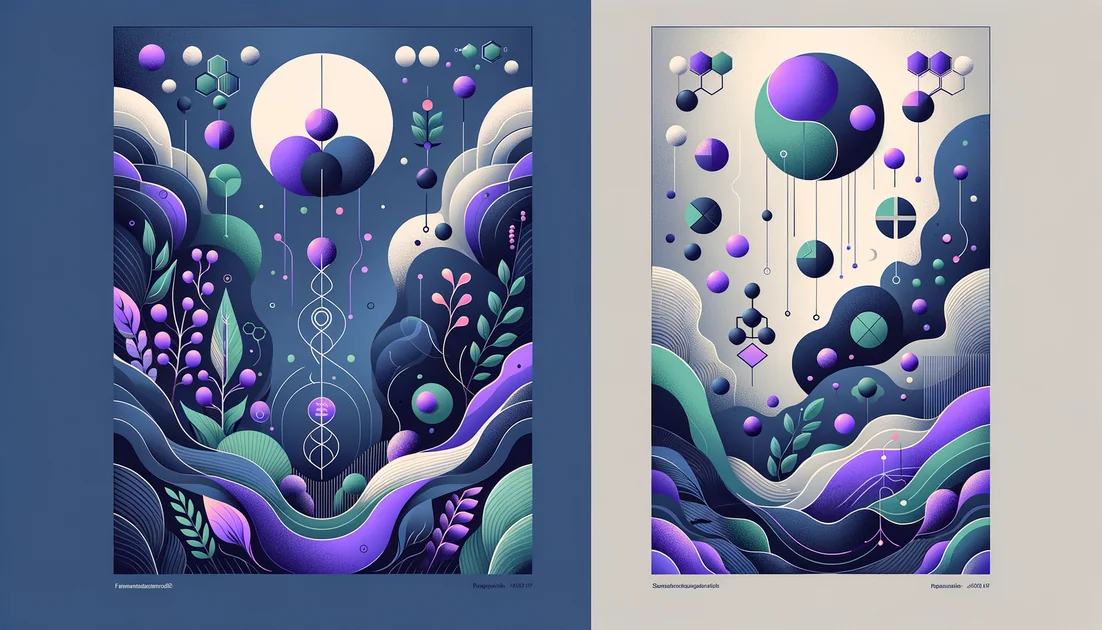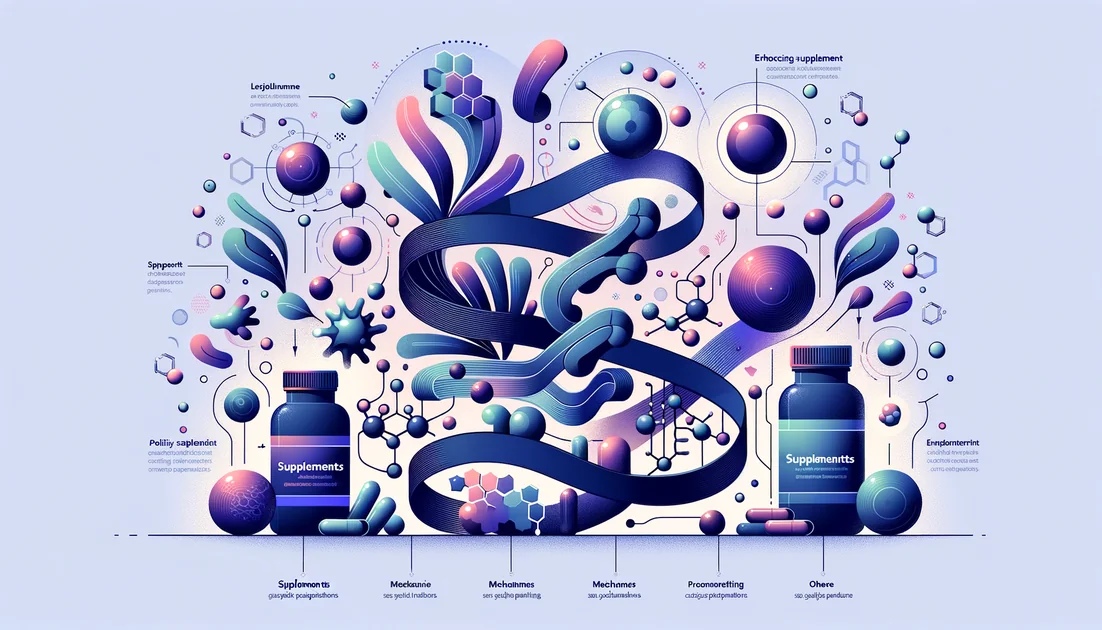
Top 10 Evidence-Based Recommendations
We analyzed the highest-quality human evidence (systematic reviews, RCTs, and the 2023 Menopause Society guidance) across 40+ papers to rank what truly moves the needle—no affiliate fluff, every claim cited. [1]
Quick Reference Card
S-equol (10 mg/day) — works even if soy never did. [4]
Sage extract (thujone-free)fast drop in flash severity. [8]
Hops 8-PN (100 μg/day) — micro-dose, macro impact by week 6. [11]
Ashwagandha (300 mg BID)stress/sleep relief that lowers MRS. [13]
Vitamin E (200 IU BID)small but real flash reduction. [15]
Ranked Recommendations
#1ERr 731 (Rhapontic Rhubarb Extract)Top Choice
The fast-acting VMS tamer most lists miss
Dose: 4 mg once daily (enteric-coated), 8–12 weeks; first benefits ~2–4 weeks.
Time to Effect: 2–4 weeks for hot flashes; continued gains to 12 weeks.
How It Works
Evidence
Bothersome hot flashes/night sweats when you want a nonhormonal, once-daily option.
Rare GI upset; data suggest endometrial safety, but avoid with estrogen-dependent cancers unless cleared by your clinician. [5]
#2S-equolStrong Alternative
The phytoestrogen that works even if you can't make it
Dose: 10–40 mg/day; most RCTs used 10 mg/day for 12 weeks.
Time to Effect: 4–8 weeks.
How It Works
Evidence
Frequent VMS, especially if soy never helped you (likely an equol non-producer).
Generally well tolerated; discuss with your oncology team if you have estrogen-sensitive cancer.
Pick "S-equol" (not generic "isoflavones"); 10 mg twice daily can help smooth levels. [4]
#3Sage extract (Salvia officinalis, thujone-free)Worth Considering
Sweat-switch support for flashes and sleep
Dose: Fresh-leaf ethanolic extract ~3,400 mg/day (DER 1:17) or standardized capsules ~100–280 mg/day for 4–12 weeks.
Time to Effect: 3–4 weeks.
How It Works
Sage appears to normalize cholinergic and adrenergic tone and may affect central beta-wave activity, improving thermoregulation and perceived stress—an 'aha' for simultaneous flashes and wired-but-tired. [8]
Evidence
Day/night sweats with tension and light sleep.
Avoid essential-oil/thujone-rich products; choose thujone-free extracts.
Once-daily tablets are easiest; pair with bedtime melatonin if sleep is the main pain point. [8]
#4Hop extract (standardized to 8-prenylnaringenin)
Tiny dose, big chill
Dose: Extract delivering 100–250 μg 8-PN daily for 6–12 weeks.
Time to Effect: ~6 weeks.
How It Works
Evidence
Moderate VMS when you prefer micro-dosing and once-daily capsules.
Possible drug interactions via phytoestrogen pathways; avoid with estrogen-sensitive cancers unless cleared.
Look for quantified 8-PN on the label; more isn't always better—the 100 μg dose outperformed 250 μg in one trial. [11]
#5Ashwagandha (Withania somnifera)
Calm the system, quiet the sweats
Dose: 300 mg root extract (e.g., KSM-66) twice daily for 8 weeks.
Time to Effect: 4–8 weeks.
How It Works
Adaptogenic modulation of HPA axis and GABAergic tone can lower perceived stress and improve sleep—both amplify VMS. Some data show small shifts in estradiol/FSH consistent with symptom relief. [13]
Evidence
8-week RCT (n=100) significantly improved Menopause Rating Scale, MENQOL, and hot-flash scores vs placebo; also showed increased estradiol and lower FSH/LH within physiologic ranges. [13]
Perimenopausal irritability, sleep fragmentation, stress-linked VMS.
Sedation in some; avoid with hyperthyroidism or sedatives unless supervised.
Take with breakfast and dinner; if sedating, move evening dose to 60–90 min before bed. [13]
#6Vitamin E (d-alpha-tocopherol)
Small, safe nudge for flashes
Dose: 200 IU twice daily for 8 weeks.
Time to Effect: 2–4 weeks.
How It Works
Antioxidant modulation may soften vasomotor reactivity; effect size is modest but meaningful for some. [15]
Evidence
Triple-blind RCT (n=84) found vitamin E reduced hot-flash counts by nearly one-third vs placebo over 8 weeks; metabolic labs remained stable. [15]
Mild VMS or as a low-risk add-on.
High-dose vitamin E can increase bleeding risk; keep to trial-like doses if on anticoagulants.
Choose natural 'd-alpha' forms; skip megadoses. [15]
#7Pycnogenol (French maritime pine bark extract)
Vascular tune-up that also helps sleep
Dose: 60–200 mg/day for 12 weeks.
Time to Effect: 4–8 weeks.
How It Works
Evidence
VMS with daytime fatigue and nonrestorative sleep.
Occasional GI upset; source from reputable brands to avoid adulteration.
If hair thinning is a concern, a 6-month 150 mg/day regimen improved hair density in a menopausal cohort. [14]
#8Melatonin
Better nights, easier days
Dose: 1–5 mg 30–60 min before bed; evaluate after 4–12 weeks.
Time to Effect: Within days for sleep; 4–12 weeks for mood/physical domains.
How It Works
Evidence
Insomnia, middle-of-the-night awakenings, mood overlay.
Morning grogginess at higher doses; start low (1–3 mg).
Use consistent bedtime and blackout; consider 0.3–1 mg if sensitive. [22]
#9Genistein-rich soy isoflavones
Food-first VMS support—works for some
Dose: 40–80 mg isoflavones/day (≥18–25 mg genistein aglycone) for 8–24 weeks.
Time to Effect: 6–12 weeks.
How It Works
Evidence
Those willing to try diet-plus-supplement with genistein emphasis (tempeh, soy milk) and patience.
Generally safe, but consult oncology if you have estrogen-sensitive cancer.
#10Soy + Hop blend (standardized)
Two ER-β paths, one capsule
Dose: As labeled; RCTs used combined extracts over 12 weeks.
Time to Effect: 6–12 weeks.
How It Works
Combines genistein/daidzein with 8-PN for complementary ER-β modulation; may help nonresponders to single agents. [21]
Evidence
Multicenter RCT (n=78) in women with moderate/severe symptoms showed the combo improved global menopausal indices and bone biomarkers vs placebo. More data needed, so it sits at #10. [21]
Moderate VMS when single agents underperform.
Same phytoestrogen cautions as above; verify 8-PN content.
Use for a full 12 weeks before judging; don't stack with separate hop/isoflavone products simultaneously. [21]
Common Questions
What supplement works fastest for hot flashes?
ERr 731 often reduces flash number/severity within 2–4 weeks; hop 8-PN shows benefits by ~6 weeks. [5][11]
Are phytoestrogens safe with a history of breast cancer?
Data are mixed; major guidelines are cautious. Discuss any phytoestrogen (equol/soy/hops) with your oncologist first. [1]
Do omega-3s help hot flashes?
No—large RCTs found no benefit vs placebo for VMS frequency or bother. [26][27]
Can I just drink soy milk?
Food-first is fine, but response varies; if no change after 12 weeks, switch to S-equol. [6][4]
How long should I trial a supplement?
Give 8–12 weeks at the studied dose before you judge; track daily flashes and sleep.
Timeline Expectations
Fast Results
Combination Strategies
Rapid Relief VMS Stack
Components:ERr 731 (4 mg AM) + S-equol (10 mg AM) + Vitamin E (200 IU with lunch)
Targets ER-β via two distinct ligands (rhaponticin derivatives + equol) plus a low-risk antioxidant nudge; different mechanisms, non-overlapping doses. [2][4][15]
Take ERr 731 and S-equol with breakfast daily; add Vitamin E at lunch. Reassess at 8–12 weeks. If breast cancer history, clear with your oncologist first.
Sleep & Night-Sweat Stack
Components:Sage extract (thujone-free) + Melatonin (1–3 mg) + Ashwagandha (300 mg with dinner)
Sage reduces sweating/flash severity; melatonin restores circadian signaling; ashwagandha lowers arousal—together improve sleep continuity and perceived VMS burden. [8][22][13]
Sage in the morning; ashwagandha with dinner; melatonin 30–60 min before bed. Trial for 4–8 weeks.
Bone-Minded VMS Stack
Components:Hop extract (100 μg 8-PN) + Calcium (1,000–1,200 mg/day from diet + supplement) + Vitamin D3 (1,000–2,000 IU)
8-PN hop extract reduced VMS in RCTs and showed favorable BMD trajectories when layered on Ca/D over 48 weeks. [11][12]
Daily hop extract with breakfast; split calcium doses (e.g., 500 mg with meals), add D3. Reassess BMD per clinician.
You might also like
Explore more of our evidence-led investigations, comparisons, and guides across every article style.

Nature's Way
Nature's Way: Testing powerhouse with selective transparency

Tirzepatide (Zepbound/Mounjaro) vs Semaglutide (Wegovy/Ozempic/Rybelsus)
For maximum weight loss or faster inches off the waist, choose tirzepatide. If you have established cardiovascular disease and want proven event reduction—or prefer an oral option for diabetes—choose semaglutide. [1][2][3][4][5]

Best for Blood sugar control
Berberine 500 mg 2–3×/day (HbA1c −0.6% to −0.75%).

Apigenin
You wrap your hands around a warm cup of chamomile. Steam rises, the day settles—and somewhere between your eyelids and your cells, a small plant molecule begins two very different conversations: one with the brain's calming brakes, another with the cell's energy meters.


Tocotrienols
The stealthier cousins of vitamin E—built with springy tails that move differently in cell membranes and behave differently in your body.














